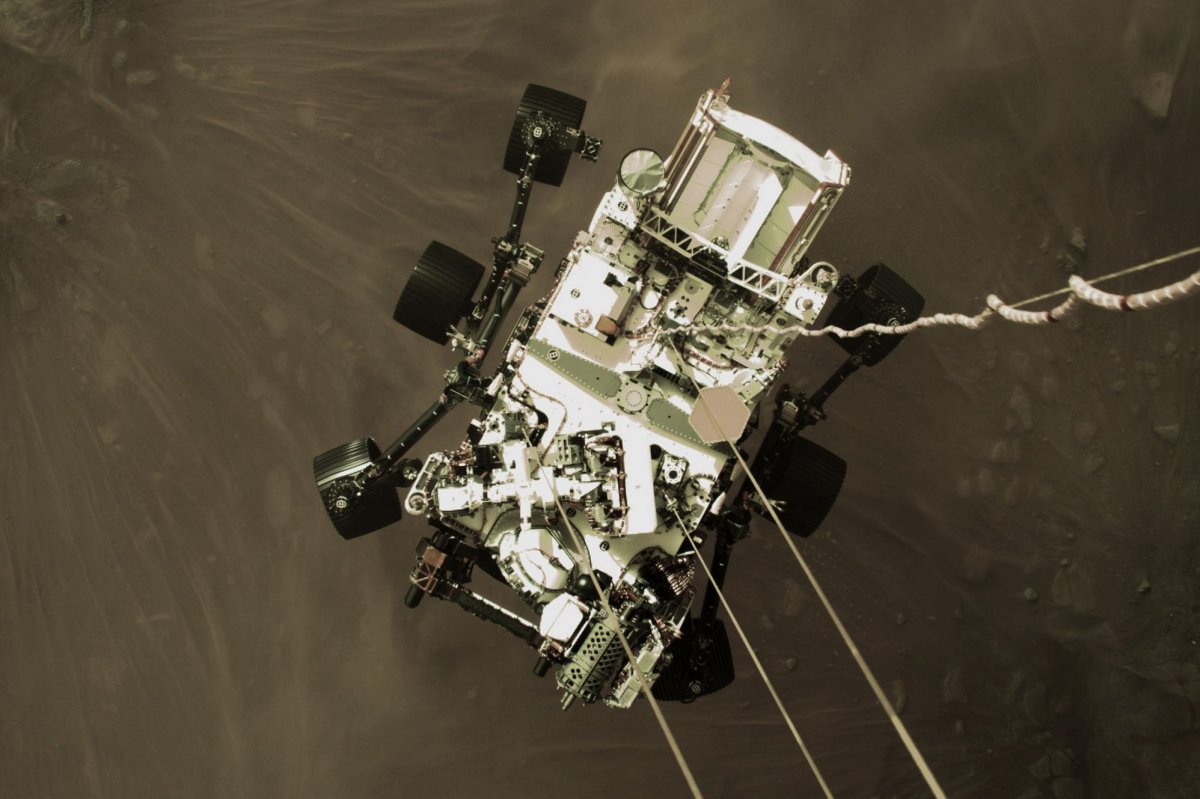Nov. 26 (UPI) — NASA’s Perseverance rover has recorded the first evidence of electrical activity on Mars that a scientist described as “mini lightning.”
A scientific team analyzed 28 hours of audio and video recordings made by the rover that landed on Mars in February 2021, and the team determined that some recordings are evidence of electrical activity on Mars, according to Gizmodo.
The electrical activity is not like the lightning bolts that occur during adverse weather on Earth and instead is more akin to static electricity that is thought to be caused when dust devils pass across Mars’ surface, NPR reported.
“This is more like mini-lightning on Mars,” scientist Baptiste Chide of the Research Institute in Astrophysics and Planetary Science in Toulouse, France, said, as reported by The New York Times.
The lightning is so weak that it won’t kill someone, but it could be an important component of chemical reactions in Mars’ atmosphere, Chide and his team of scientists said in a study published Wednesday in the journal Nature.
“Lightning is among the most energetic manifestation[s] of electrical activity in planetary atmospheres, with documented observations not only on Earth but also on Saturn and Jupiter,” the article’s abstract says.
“On Mars, the existence of electrical activity has long been suspected but never directly demonstrated,” the abstract continues.
The electrical activity discovered on Mars is the result of the planet’s dusty atmosphere, which can cause wind-blown dust, dust devils and large dust storms that become electrified via triboelectric charging.
The same process occurs in Earth’s deserts, according to the abstract.
The Perseverance rover’s microphone recorded what scientists have interpreted to be the sounds of electrical arcs spanning a few centimeters that are followed by shockwaves that can be heard on the recordings.
The electrical activity recorded on Mars occurs when short circuits cause electricity to jump from one gas molecule to another, which might cause problems for electrical components in space suits and equipment during future Mars missions.
The Perseverance rover recorded a total of 55 electrical incidents over the past two years and usually were associated with dust devils and dust storms.
The confirmation of lightning solves what lightning researcher Daniel Mitchard of Cardiff University in the United Kingdom called “one of the biggest mysteries about Mars.”
“There’s been a very big mystery about lightning on Mars for a long time,” said Mitchard, who wrote a commentary for the published article but did not participate in the study.
The study could help engineers to design spacesuits, spacecraft and equipment that resist damage from the low-level electrical activity.

NASA’s Perseverance Mars rover, using its Mastcam-Z camera system, captured this view of the Martian sunset on November 9, 2021, the 257th Martian day, or sol, of the mission. Martian sunsets typically stand out for their distinctive blue color as fine dust in the atmosphere permits blue light to penetrate the atmosphere more efficiently than colors with longer wavelengths. But this sunset looks different: Less dust in the atmosphere resulted in a more muted color than average. The color has been calibrated and white-balanced to remove camera artifacts. Photo courtesy of NASA | License Photo

